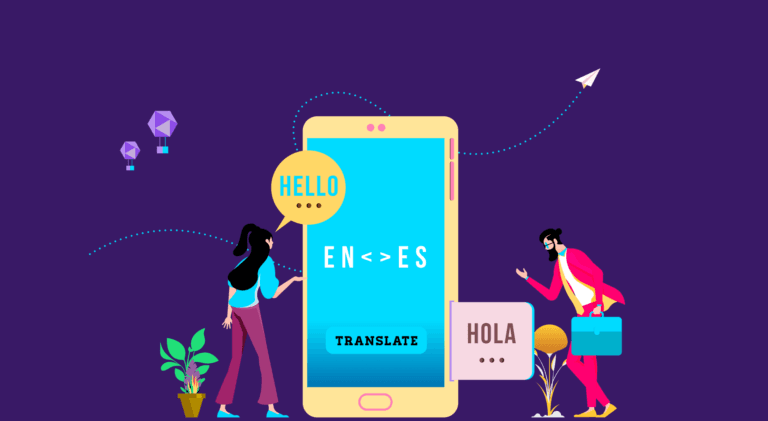Literal Translation: Issues, Examples, and Solution

The process of translation is complex. It is not an easy trade, and thus finding the right person for your translation might be more challenging than other content tasks. The lack of expertise in this field makes literal word for word translation very common. In fact, content creators who have excellent command over grammar and language also get caught in the literal translation trap.

The job of a translator is often compared to that of a juggler; a juggler has to simultaneously juggle the balls, while a translator has to juggle the complexities of languages. Sometimes a simple word in the original language may mean something completely different in the target language.
However, don’t let this scare you. For your translation to work, you don’t need a literal translation but an expert who can guide you through the baffling terminology and untangle the complexities of idioms, dialect idiosyncrasies, etc.
What is Literal Translation?

Literal or direct translation is a verbatim word for word translation of content where each word is translated separately. This is done without considering a sentence or phrase as a whole. Mistranslation can lead to serious problems or cause embarrassment for the brand.
While reading in the target language, literal translation sounds unnatural, may be difficult to understand, and not convey the intended meaning as the original text. Literal translation often results in incomprehensible sentences with poor grammatical structures.
In technical translations, like equipment instructions, scientific, medical, or legal translations, literal translations can cause serious damage to life and property. Also, wording can be very delicate when handling international business translations, and skilled professionals should be employed to translate the text.
Why Should You Avoid Literal Translation

One of the key reasons to avoid the literal translation is because it sounds unnatural, automatic, and mechanical. Literal translation risks creating content with a completely different meaning. The literal word for word translation, without the transfer of grammar and punctuation, can sometimes have a disastrous effect. The literal translation of sentences also deprives the content of emotions and tone of voice.
Literal translation makes the content easier to study and comprehend. Sometimes, the same word can have multiple meanings in our multicultural and multilingual world. This can sometimes lead to offensive translations. For example, the word “date” can mean a calendar day, a fruit, or even a rendezvous with someone special.

How to Avoid Literal Translation
The literal translation is a definite no-no for any brand or company. To avoid literal translation, you can follow the below-mentioned pointers:
- Always go for professionals with experience in translation. If they are bilingual, it can be an added advantage.
- For legal and medical translations, employ authorized translators who are also certified, as these may have more serious results if mistranslated.
- Have a solid quality control team to ensure error-free translation.
- To avoid literal translation, switch the word order, modify sentences, restructure phrases and avoid using the same punctuation placement.
- Expand your knowledge about the target language’s culture, traditions, and vocabulary, as this will help you understand the content in the target language.
- Think about the essence of the message conveyed as blocks of ideas and ignore independent words to avoid literal translation.
Examples of Literal Translation
We understand that translation is not that simple. It also plays a huge part in international business branding. However, it is better not to have a translation rather than a bad translation; it will impact the brand’s image and standing across the globe. We have put together a few word-for-word translation examples that either make no sense or change the meaning.
Some literal translations from brands:
- IKEA – “Fartfull (meaning full speed in Swedish) workbench” from Ikea

- Parker Pen – while translating their slogan in Spanish, used “embaraza” in place of “Embarrass” which means “impregnate” in Spanish. The original tagline “It won’t leak in your pocket and embarrass you” was translated to “It won’t leak in your pocket and impregnate you”

- General Motors – introduced the Chevy Nova model, in Spanish “No Va” stands for “It won’t go”
Literal German translations:
- Warteschlange ((queue)) – Wait Snake
- Klobrille ((toilet seat)) – Toilet Glasses
- Schildkröte ((tortoise)) – Shield Toad
- Maultier ((mule) – Mouth Animal
- Glühbirne ((light bulb) – Light Pear
Literal Spanish translations:
- Te estoy tomando el pelo (I’m just pulling your leg) – I’m taking your hair
- Ponte las pilas (work hard) – Put your batteries on
- Piense fuera del molde tradicional (think outside the box) – Think outside the traditional mold
Literal Italian translation:
- L’abito non fa il monaco (Clothes don’t make the man) – The dress does not make the monk
- Tocca Ferro (Touch Wood) – Touch Iron
- In bocca al lupo (Break a leg) – In the mouth of the wolf
Literal French translation:
- Salle en cours d’aménagement (Room undergoing renovation) – Room at work
- Se taper le cul par terre (To laugh my ass off) – Banging ass on the floor
- Pelle à neige ( Snow pusher) – Snow drug pusher
You can witness literal translation everywhere as most people involved in the translation process don’t have deep knowledge of the other language. Hence, it is possible that the translators don’t realize that they’re mistranslating or doing the literal translation.
Rather than putting your entire content at risk, it will help if people with bilingual expertise are given the task of translating. For example, with international growth, you can eliminate literal German translations and literal Spanish translations with the right knowledge. It is critical to understand the translator’s skills and knowledge for top-notch and error-free translation.
FAQs
A literal word-for-word translation may sound unnatural, may not convey the expected meaning, and may be difficult to read for the target audience.
While translating a text, you may face challenges translating expressions, idioms, compound words, and sarcasm. These may lose their charm or effect while translating.
Computer-assisted translation (CAT) is a tool that helps translators in the translation process. With the help of a CAT tool, more words can be translated daily as the system recognizes repetitive words and text.
There are a few tips to check the translation’s quality. These include back translation, spot-checking with a machine translator, and also in-house quality checks.
Literal translation is providing a literal word-for-word translation without focusing on the meaning of the content as a whole. Free translation, on the other hand, is translating the content while keeping the original text’s meaning intact.
Latest Blogs
Explore how Google’s 2025 AI search updates triggered ranking chaos. Learn actionable strategies to adapt your SEO for AI Overviews, zero-click searches, and SERP volatility. Stay ahead now.
Learn how to rank on AI search engines like ChatGPT, Perplexity, and Gemini by optimizing your content for authority, structure, and relevance. Stay ahead in AI-driven search with this strategic guide.
Explore the best healthcare SEO services for your medical practice. Improve online visibility and effectively reach more patients in need of your services.
Get your hands on the latest news!
Similar Posts

Translation
5 mins read
All You Need to Know About Language Translation and Terminology Management

Translation
5 mins read
6 Reasons to Translate Content into German

Translation
5 mins read